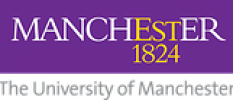© Pint of Science, 2025. All rights reserved.
Hearing and listening are complex processes that involve both the sensory system of the ears and the cognitive functions of the brain. In this series of talks, you will learn about the impact of recreational noise exposure on hearing health, the latest developments in hearing aid technology, and how hearing researchers are trying to measure the effort it takes to listen well.
Noise exposure and hearing health
Prof. Chris Plack
(Ellis Llwyd Jones Professor, Audiology, The University of Manchester)
There is much concern about the damaging effects on hearing from exposure to recreational noise, particularly from personal listening devices and attendance at night clubs and live music events. I will talk about the state of scientific knowledge in the area, and will describe an ongoing study we are conducting to understand the risks of noise exposure for teenagers and young adults.
The future of hearing aids: not just for grandpa anymore
Dr. Gabrielle Saunders
(Senior Research Fellow, The University of Manchester)
Today’s hearing aids have inbuilt sensors and can be connected to the cloud. This means they can stream your music, monitor your heart rate, and track your movement. They can also monitor sound and speech levels in the surroundings, and use the information to adjust the hearing aid settings. In this talk I’ll discuss how some of these new innovations can benefit people with hearing loss. I will also ask whether AI and automation is the best way to provide personalised hearing care.
Measuring the unmeasurable - listening effort
Dr Callum Shields
(Core Surgical Trainee, The University of Manchester)
Listening effort (LE) describes the cognitive resources needed to process an auditory message. Our understanding of this notion is in its infancy, hindering our ability to appreciate how it impacts individuals with hearing impairment. Despite the myriad of measurement tools, a validated method remains elusive. This is complicated by the seeming lack of association between tools. Given this inconsistency, it is prudent to think of alternative ways to capture this abstract concept to ensure its burden of disease is represented in the assessment of people with hearing loss.
Map data © OpenStreetMap contributors.
